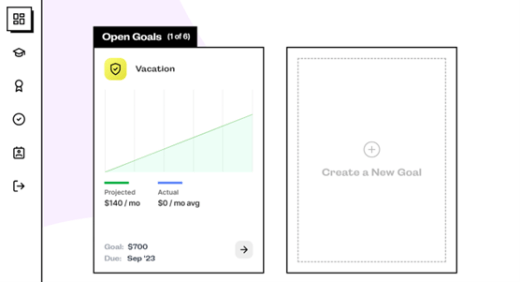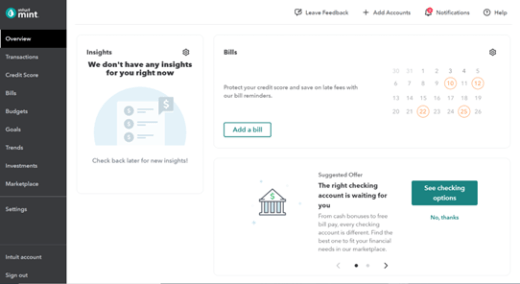
Student loans are a common way for students to finance their higher education. Over half of students from public four-year institutions take out student loans. In fact, the average amount of student loans per student is $28,950. This is a significant amount that is often taken on without careful consideration or understanding of how they work. So, what are student loans, where do they come from, and how do they work?
First, let’s look at the basics of loans and how they work. Loans are contracts to borrow money from a lender and pay it back later plus a little extra. There are two parts of loans that you will need to pay back. The first is called the principle, this is the money you borrowed. For example, if you borrow $1,000 dollars, $1,000 is the principle of the loan. The second piece is called interest, interest is the fee you must pay to borrow the money. This ‘fee’ is determined by the interest rate of the loan. The higher the interest rate, the more expensive the loan will be. Interest rates are the percent of the total balance that will be added to the amount you have to pay back. For example, if you borrowed $1,000 with a 5% interest rate, 5% of the $1,000 will be added to your balance annually. A key term to know is compound interest. Essentially, compound interest is the interest that is added on top of interest. This makes the loan more expensive the longer you hold it without making payments.
So, what is a student loan? A student loan is money borrowed from a lender to pay for college. The money can be used for tuition, room and board, textbooks, supplies, and/or other fees. The student must pay back the loan after graduation. There are two main sources of student loans: the Federal government and private lenders. Federal student loans make up roughly 92% of all student debt while private loans make up the remaining 8% of student debt. Federal student loans are awarded through filling out the FAFSA (the Free Application for Federal Student Aid). The FAFSA, which must be filled out annually, assesses each student’s needs and awards student loans and grants accordingly. Private student loans must be applied for individually and are based on the individuals credit rating.
Since most student’s dealing with financial aid look to federal loans, let’s look at what federal student aid is. Federal student aid is a secure way to fund higher education. Many protections and safety nets have been put in place for students. For example, federal student loans are in deferment (the postponing of payments) until six months after graduation. This means that students do not have to make monthly payments on their loans while they are in school full time. There are several types of student aid that can be awarded by filling out the FAFSA.
- Federal Grants: Grants are financial awards from the U.S. government to fund student’s education. Grants are awarded to students based on financial need and determined by the FAFSA form. If you receive a grant, accept it in full; you will never have to pay these back!
- Subsidized Federal Loan: These are loans offered by the federal government that do not add interest to the balance while the loans are in deferment (this includes the six-month grace period after graduation). Instead, the government pays the interest while the student is in school.
- Unsubsidized Federal Loan: These are loans taken from the federal government that add interest while you are in school. This means that the amount borrowed will increase with compounding interest while the borrower is in school.
- Parent Plus Loan: These loans are taken by your parents through the government to cover college expenses. Often, these loans will be offered in a significantly higher amount than the other loans mentioned above. However, they tend to come with higher interest rates as well. These loans use your parent’s credit score, and you will pay them back through your parents. When applying for a parent plus loan you will need to make sure to check the “defer loan” box otherwise your parents will be required to start making payments six months after the loan was taken. If you put the loan into deferment, no payments will need to be made until six months after you graduate. Remember, these loans will affect your parents so make sure that you communicate clearly with them if you decide these loans are needed.
When taking federal student aid, there are three things to keep in mind. First, you don’t have to take out offered loans in full; you can key in the amount you want to take. Second, whatever amount you decide to take will be disbursed into two parts at the beginning of each semester. Because of this, you will need to remember to plan ahead for the spring semester and remember that the amount you will receive this semester is half of what you took for the year. Finally, you can always take out more at a later date if you decide you need more. Studentaid.gov is a very helpful website and can answer a lot of questions you might have. It is also where you can keep track of how much you owe in total student loans. You might also want to check out our website, it has a lot of information on student loans as well as how to navigate finances in general while in college (Powercat Student Loan Info).
In contrast to federal aid, private loans must be individually applied for. Eligibility for private loans is based off your personal credit score. The better your credit score is, the better loans you will be able to qualify for. It is important to note that private student loans often do not have the same protections for borrowers that federal student aid has. One good starting place to look for private student loans is FastChoice.
Once you have graduated college it will be time to start paying off your student loans. If you have federal student loans, you will be put in touch with your loan servicer (the company who you will be sending payments too). At this time, you will select a repayment plan provided through the federal government. If you would like to simulate what your student loan repayment might look like, use this link (Loan Simulator) to use the tool. If you have private student loans, you will begin to make monthly payments to whomever you borrowed from.
Understanding what student loans are and how they work is important to each student’s financial well-being. By knowing how loans work, where they come from, and the various types, students can make informed decisions that align with their personal financial goals. If you have any questions, don’t hesitate to schedule an appointment with Powercat Financial. We can help you understand student loans, determine how much financial aid you need, and create an education financial plan! All appointments are free and confidential; you can sign up at our website: Powercat Financial.
Upcoming Events:
Live Your Best Life – October 16th, 12:00-1:30pm in the Union Courtyard. Come join us for a fun, interactive game of life where you can learn how to make important financial decisions in your life. We will have food and prizes for those who come!
Financial Well-being Ambassadors – October 9th, 4:00-5:00pm at the Union in the Big 12 Room. Want to be part of Powercat Financial and learn about personal finance? Come join us at our monthly meeting to learn about credit!
Abram Mugler
Peer Counselor III
Powercat Financial








